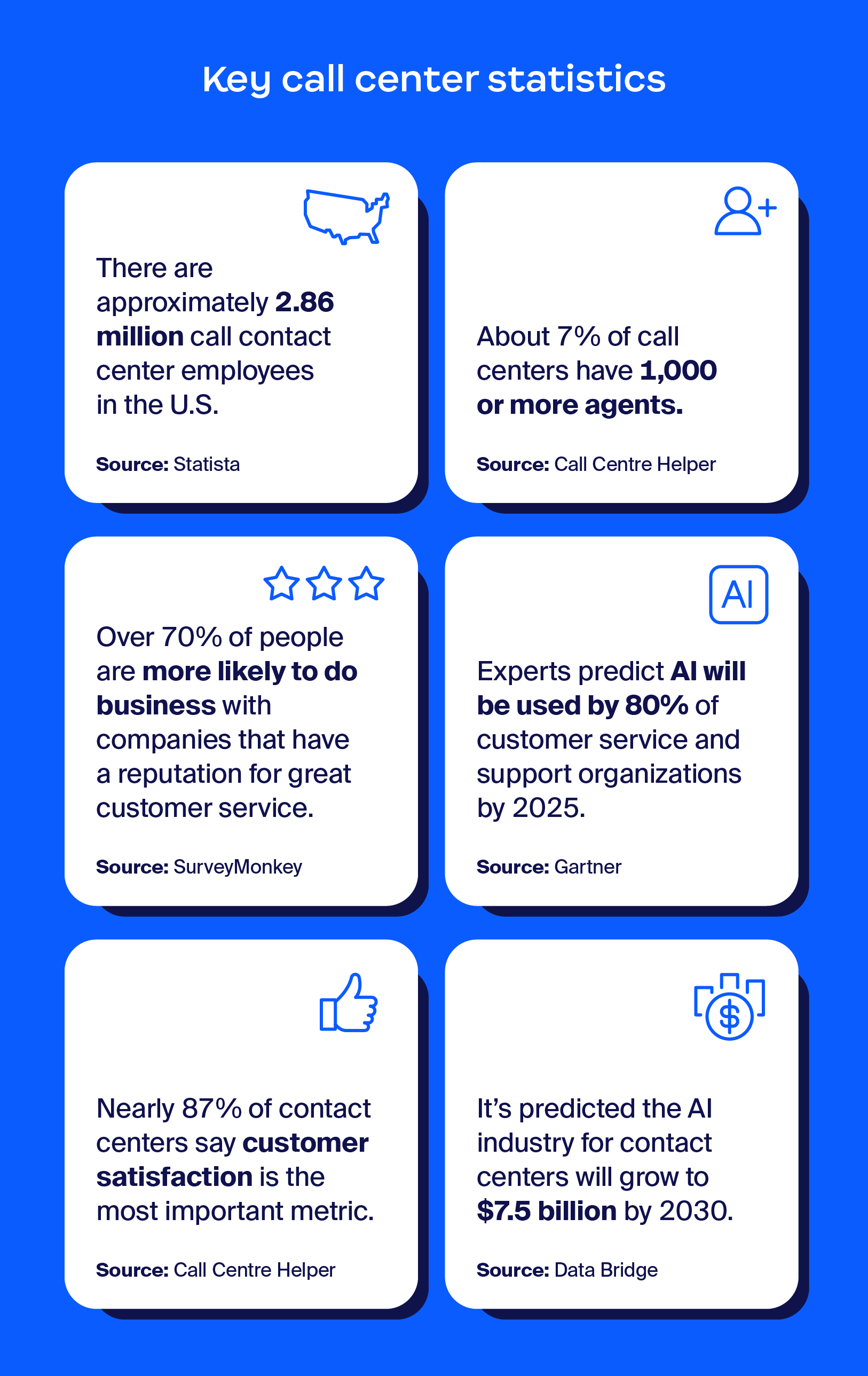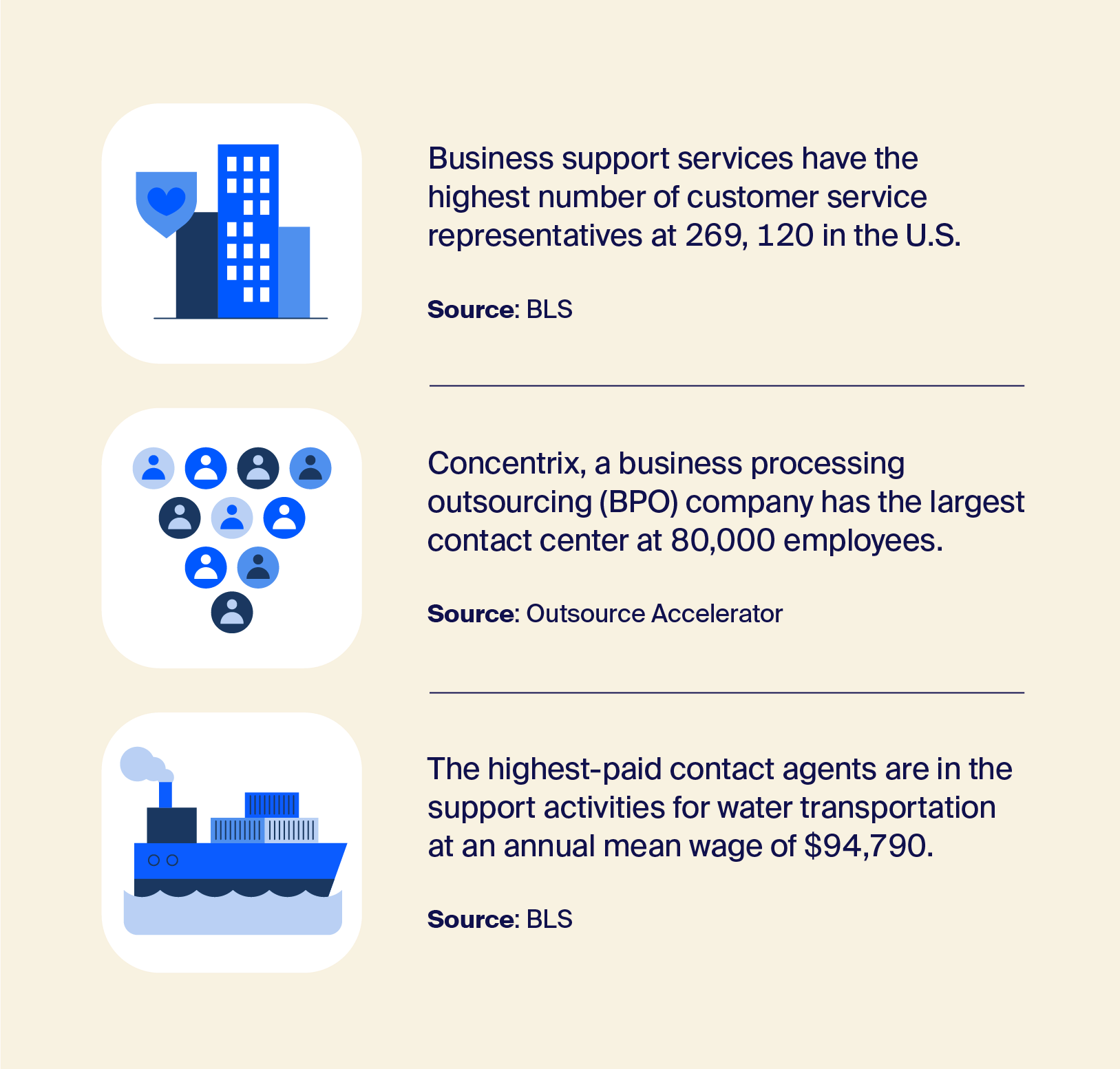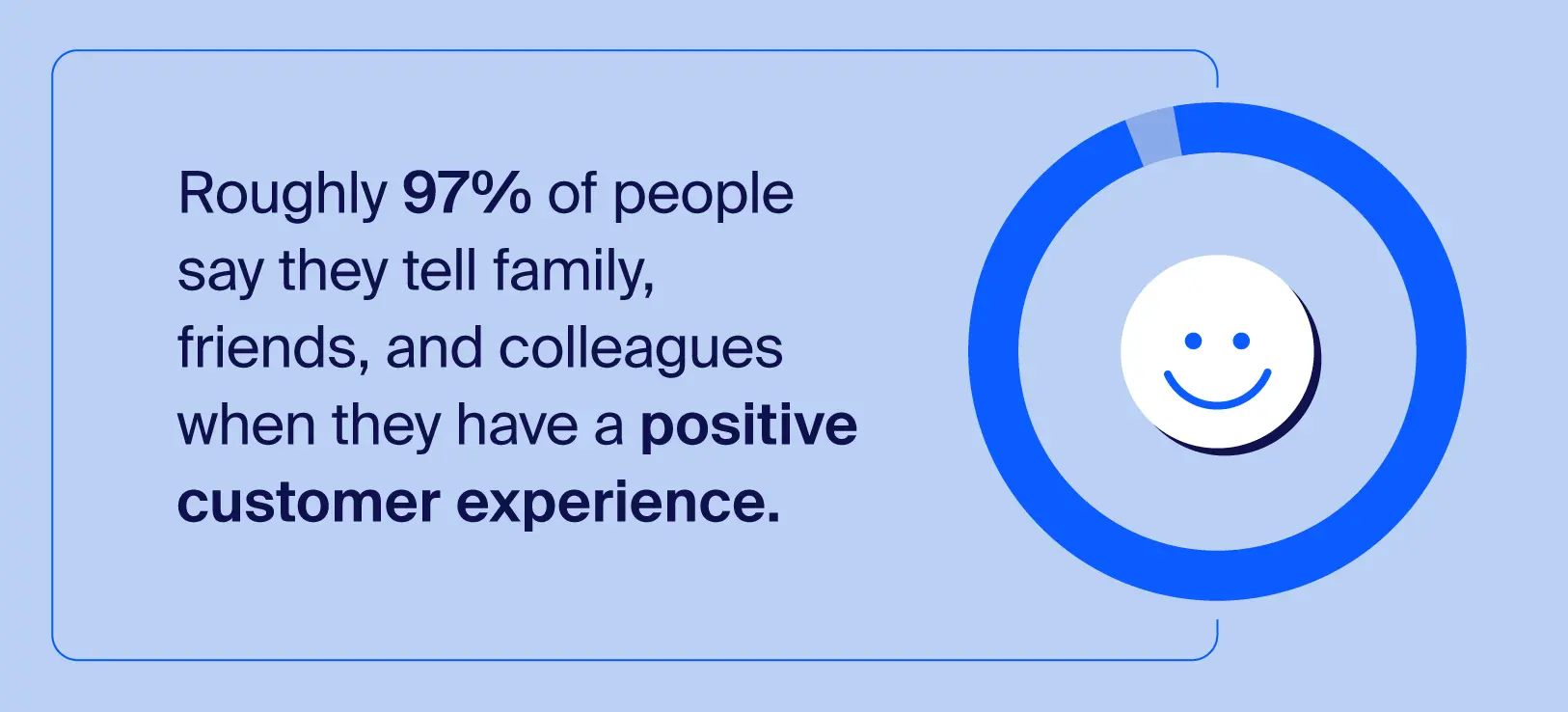
Meet Zoom AI Companion, your new AI assistant!
Boost productivity and team collaboration with Zoom AI Companion, available at no additional cost with eligible paid Zoom plans.
Updated on June 05, 2025
Published on June 05, 2025


Call centers remain a vital channel for businesses to connect with their customers in today’s fast-paced digital landscape. However, to stay competitive, it’s imperative to take advantage of data-driven insights and new technology. Call center statistics are a powerful way to understand customer behavior, optimize operations, and enhance the overall customer experience.
In this post, we showcase the latest industry insights, explore performance benchmarks, and examine emerging customer trends. By understanding these key areas, you can provide your contact center with tools and strategies to deliver exceptional service and hit crucial KPIs.
These key call center statistics indicate how contact centers are succeeding and where the industry is headed:
1. There are approximately 2.86 million contact center employees in the U.S. (Statista)
2. About 7% of contact centers have 1,000 or more agents, with the majority (27%) having fewer than 30. (Call Centre Helper)
3. Over 70% of customers say they’re much more likely to do business with a company that has a great reputation for quality customer service. (SurveyMonkey)
4. It’s predicted that generative AI will be used by 80% of customer service and support organizations to improve customer experience and agent productivity by the end of 2025. (Gartner)
5. Nearly 87% of contact centers say their most important metric is customer satisfaction. (Call Centre Helper)
6. Experts predict the global AI industry for contact centers will grow to over $7.5 billion by 2030. (Data Bridge)

Technology is reshaping the call center industry. AI-powered contact center tools help streamline operations, boost team productivity, and elevate morale. The latest technology empowers agents to focus on complex issues, which can lead higher job satisfaction and increase confidence. Additionally, customers benefit from a better experience due to faster response times and more personalized service.
These stats showcase how contact centers are using technology to optimize operations and tailor services to meet evolving customer needs.
7. Using AI can help increase revenue for those using it. (Zoom)
8. Less than 13% of contact centers take advantage of workforce management forecasting software. (Call Centre Helper)
9. Experts believe AI will reduce labor costs in the contact center industry by $80 billion. (Gartner)
10. The use of speech analytics in contact centers grew from 28% to 37.5% between 2022 and 2023. (Call Centre Helper)
11. One report predicts that 10% of agent interactions will be conducted via conversational AI by 2026. (Gartner)
12. Close to 60% of customers have used chatbots for simple self-service needs. (Salesforce)
We delve into some key statistics to better understand the unique challenges and opportunities facing contact centers across various industries:
13. The median salary of medical contact center representatives is $92,085. (Salary.com)
14. Concentrix, a business processing outsourcing (BPO) company, has roughly 80,000 employees in the Philippines, making it the largest contact center in the world. (Outsource Accelerator)
15. Business support services have the highest number of customer service representatives in the U.S. at 269,120 total. (U.S. Bureau of Labor Statistics)
16. Top companies that outsource their contact centers include Amazon, Bank of America, Microsoft, and Verizon. (Magellan Solutions)
17. Approximately 80% of contact center employees in the BPO industry say it’s critical to have a career growth path, compared to only 45% in all other industries. (NICE)
18. The telecommunications industry has the longest custom chat wait times at an average of over two minutes. Government call centers have the second highest at about 55 seconds. (Statista)
19. The industry with the highest salary for customer service representatives is support activities for water transportation at an annual mean wage of $94,790. (U.S. Bureau of Labor Statistics)

To truly grasp the customer experience, it’s important to measure and analyze customer wants, needs, and preferences. These customer service statistics give valuable insights into customer behavior and how customers perceive their interactions with agents.
20. About 80% of consumers say they'd like interaction summaries for their records. (Zoom)
21. Although virtual agents are making contact centers more efficient, roughly 43% of customers prefer speaking with a real person over the phone to resolve shopping issues. (First Orion)
22. The number of consumers who leave a brand after one negative interaction increased by 10 percentage points between 2022 and 2024. (Zoom)
23. Over 55% of customers said they’d pay brands more for a better customer experience. (Forbes)
24. Nearly 80% of customers expect short wait times when reaching customer service, but this experience only happens about 60% of the time. (Zoom)
25. Customers who prefer calls to resolve shopping issues list their primary reasons as efficiency, the ability to better explain the issue and ask questions, and that they’ve had bad experiences with chat help. (First Orion)
26. GenX is more likely to switch brands after one or two negative experiences compared to GenZ. (Zoom)
27. Roughly 97% of customers say they’ll tell family, friends, and colleagues when they have a great customer experience. (SurveyMonkey)
28. When receiving communications about updates, deals, and advertisements, 40% of customers prefer an email or mobile app notification over calls or text messages. (First Orion)

Call center metrics are essential to identifying areas for improvement and maintaining a competitive edge. Businesses that monitor call center performance metrics for the customer experience and agent performance can optimize operations and enhance customer satisfaction.
29. After-call time for agents can be reduced by up to 35% with the help of generative AI summarizations. (Zoom)
30. Customer critical error accuracy is the top QA metric contact centers track, with 74% of organizations tracking it. (COPC)
31. Only 31% of contact centers measure customer emotions. (Call Centre Helper)
32. Over 50% of customer experience professionals say one of their biggest challenges is exceeding customer expectations. (SurveyMonkey)
33. As of 2022, contact center customer satisfaction was rated 69 out of 100 for the private sector and 70 for government contact centers. (Statista)
34. The majority of contact centers use QA monitoring for agents weekly. (COPC)
35. About 47% of contact centers say sales volume is not an important metric. (Call Centre Helper)
36. Almost 65% of companies use monitoring software to track agent performance. (COPC)
You’ve learned about the latest contact center statistics shaping the industry, from the rise of AI and automation to the increasing importance of customer experience. Knowing and understanding these trends allows your contact center to implement the right strategies, helping you stay ahead of the curve and deliver exceptional customer service.
Zoom CX offers a comprehensive suite of products that enable you to harness these trends and drive success. Our AI-first solutions can automate routine tasks for supervisors and the quality management team, improve agent productivity and engagement, and provide customers with quick resolutions.
With real-time analytics and reporting, you can gain valuable insights into your contact center’s performance, allowing you to make decisions based on precise data. If you’re ready to take your contact center to the next level, get in touch with a Zoom CX expert today.